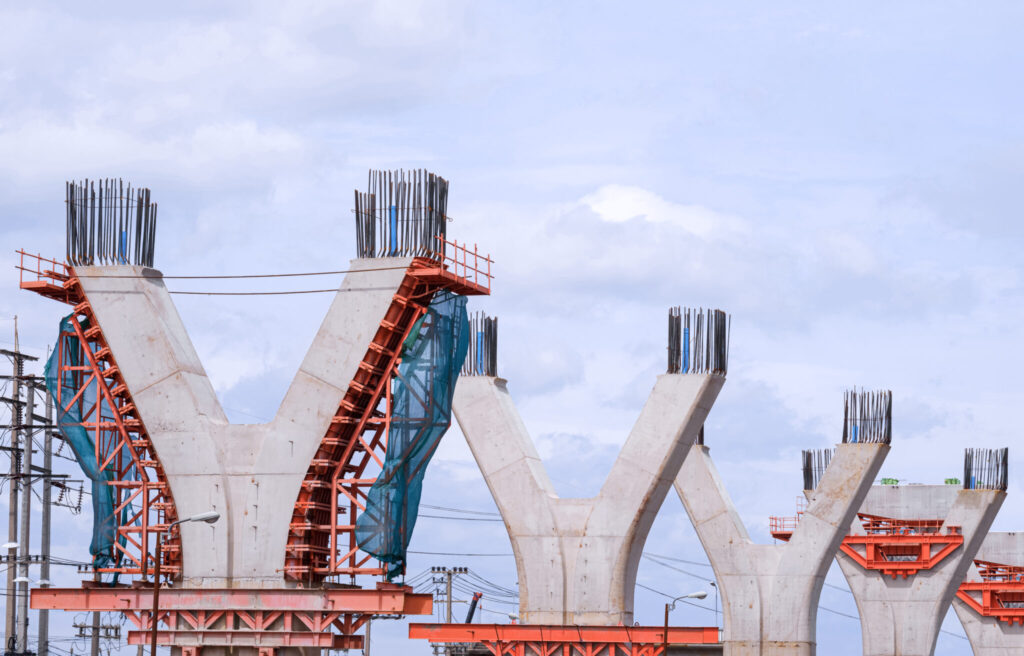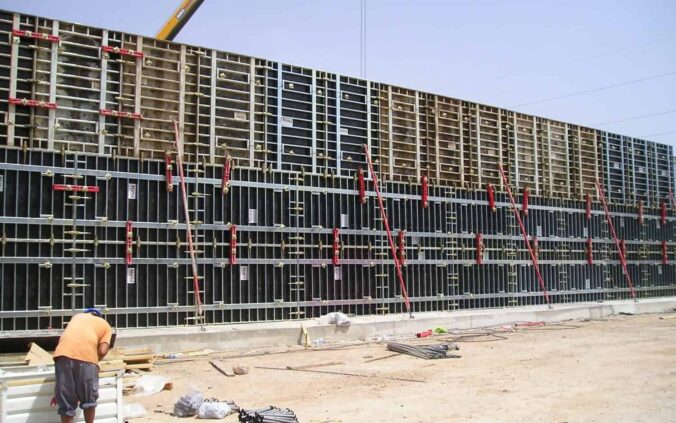Concrete is a versatile and durable material, widely used in construction projects. However, achieving a perfect finish requires careful planning and execution, particularly when it comes to formwork. Plywood formwork is a popular choice due to its flexibility and cost-effectiveness. This article will guide you through the essential techniques for using plywood formwork to ensure flawless concrete finishes.
Understanding Plywood Formwork
Plywood formwork involves creating temporary structures that hold wet concrete in place until it hardens. The choice of plywood is crucial, as it affects the quality of the finish. Plywood formwork is favoured for its strength, lightweight nature, and ability to be shaped into various forms. This versatility makes it a popular choice among builders and contractors, as it can be adapted to suit a wide range of architectural designs, from simple slabs to complex curved structures.
Types of Plywood
There are several types of plywood available, each suited to different applications. For formwork, structural plywood is commonly used because it is designed to withstand heavy loads and moisture. Marine plywood is another option, offering enhanced water resistance, making it ideal for outdoor projects. Additionally, there is also film-faced plywood, which has a smooth surface that helps achieve a superior finish on concrete. This type is particularly beneficial for projects where aesthetics are important, such as in visible architectural elements.
Benefits of Plywood Formwork
The benefits of using plywood for formwork are numerous. It is relatively inexpensive compared to other materials, and its lightweight nature makes it easy to handle and transport. Additionally, plywood can be cut and shaped easily, allowing for custom designs that meet specific project requirements. Furthermore, plywood formwork can be reused multiple times, making it a cost-effective solution for large-scale construction projects. Its ability to be easily dismantled and stored also contributes to a more efficient workflow on site, minimising downtime between tasks.
Moreover, the environmental impact of plywood should not be overlooked. Sourced from sustainable forests, many manufacturers ensure that their plywood is produced in an eco-friendly manner, which is increasingly important in today’s construction industry. The use of plywood can also contribute to better thermal insulation properties in buildings, enhancing energy efficiency. As the construction sector continues to evolve, the demand for sustainable materials like plywood is likely to grow, further solidifying its role in modern formwork solutions. Read more about energy on https://www.energy.gov/energysaver/energy-literacy-essential-principles-energy-education
Preparing for Formwork Installation
Before beginning the installation of plywood formwork, thorough preparation is essential. This stage involves planning, measuring, and ensuring that all necessary materials and tools are on hand.
Site Assessment
Conducting a site assessment is the first step in the preparation process. This involves evaluating the ground conditions, identifying any potential obstacles, and determining the best approach for the formwork installation. Understanding the site will help in making informed decisions about the type and size of the formwork required. It is also crucial to take into account the weather conditions, as rain or extreme temperatures can impact both the installation process and the curing of the concrete. Furthermore, assessing the proximity of utilities such as water, gas, and electricity lines will ensure safety and prevent any disruptions during construction.
Gathering Materials and Tools
Once the site has been assessed, the next step is to gather all necessary materials and tools. Essential items include plywood sheets, timber for bracing, screws, nails, and a level. Additionally, having tools such as a saw, drill, and measuring tape will facilitate a smooth installation process. It is advisable to check the quality of the plywood, ensuring it is free from defects such as warping or cracks, which could compromise the integrity of the formwork. Moreover, considering the use of waterproofing agents or sealants can enhance the durability of the formwork, particularly in regions prone to moisture. Having a checklist can be beneficial to ensure that no crucial items are overlooked, thus streamlining the workflow and minimising delays during the installation phase.
Step-by-Step Installation Process
With preparation complete, the actual installation of plywood formwork can begin. This process requires careful attention to detail to ensure that the formwork is secure and accurately shaped.
Measuring and Cutting Plywood
The first step in the installation process is to measure and cut the plywood sheets to the desired dimensions. Accurate measurements are vital to avoid gaps or misalignments that could compromise the concrete finish. Use a saw to cut the plywood, ensuring that the edges are smooth and free from splinters. It is advisable to use a straight edge or a guide to achieve clean cuts, as this will enhance the overall quality of the formwork. Additionally, consider marking the cutting lines with a pencil to ensure visibility and precision during the cutting process. Click here to find more about precision.
Assembling the Formwork
After cutting the plywood, the next step is to assemble the formwork. Start by laying out the pieces according to the design plan. Secure the edges using screws or nails, ensuring that the structure is rigid and stable. It is crucial to check that all corners are square and that the formwork is level before proceeding. To further enhance the integrity of the assembly, consider using wood glue in conjunction with mechanical fasteners; this will create a stronger bond and help to eliminate any potential movement during the concrete pour. Moreover, double-checking the alignment of the formwork with a spirit level can save time and effort later on, as any adjustments made now will prevent complications down the line.
Bracing the Formwork
To prevent the formwork from bowing or collapsing under the weight of the concrete, bracing is necessary. Use timber braces to support the formwork at strategic points, ensuring that they are securely fastened. This additional support will help maintain the shape of the formwork during the pouring process. It is also beneficial to consider the direction and angle of the braces; they should be positioned to counteract the lateral pressure exerted by the wet concrete. For larger projects, employing diagonal bracing can provide extra stability, reducing the risk of deformation. Furthermore, regularly inspecting the bracing throughout the pouring process will ensure that everything remains secure and in place, allowing for a smooth and successful concrete pour.
Pouring the Concrete
With the formwork securely in place, the next step is to pour the concrete. This stage requires careful handling to ensure an even distribution and to avoid air pockets.
Choosing the Right Concrete Mix
Selecting the appropriate concrete mix is essential for achieving the desired finish. Factors such as the intended use, environmental conditions, and load-bearing requirements will influence the choice of mix. A well-balanced mix will ensure durability and a smooth finish.

Pouring Techniques
When pouring the concrete, it is important to do so in a controlled manner. Start at one end of the formwork and work your way to the other, using a shovel or concrete vibrator to distribute the mix evenly. This technique helps to eliminate air pockets and ensures a consistent density throughout the formwork.
Finishing Techniques
After the concrete has been poured, finishing techniques play a crucial role in achieving a perfect surface. These techniques can vary depending on the desired outcome.
Screeding
Screeding involves using a straight edge to level the surface of the concrete. This process should be done while the concrete is still wet to ensure that the surface is smooth and even. The screed should be moved back and forth across the formwork, removing excess concrete and filling in low spots.
Trowelling
Once the screeding is complete, trowelling can be performed to further refine the surface. A trowel is used to smooth the concrete, creating a polished finish. This step may require multiple passes, depending on the desired level of smoothness.
Removing the Formwork
After the concrete has cured, the formwork can be removed. This stage requires care to avoid damaging the newly formed concrete.
Timing for Removal
Timing is crucial when it comes to removing formwork. It is essential to wait until the concrete has sufficiently cured to support its own weight. Typically, this can take anywhere from 24 to 48 hours, depending on the mix and environmental conditions.
Careful Dismantling
When dismantling the formwork, take care to avoid excessive force that could chip or crack the concrete. Begin by removing any screws or nails, and then gently pry the plywood away from the concrete. If the formwork is stuck, tapping it lightly with a hammer can help loosen it.
Common Challenges and Solutions
Even with careful planning and execution, challenges can arise during the formwork process. Understanding these potential issues and how to address them is key to achieving a successful outcome.
Water Leakage
One common issue with plywood formwork is water leakage, which can occur if the joints are not sealed properly. To prevent this, use a sealant or tape on the joints before pouring the concrete. This will help to create a watertight barrier, ensuring that the concrete remains contained within the formwork.
Formwork Movement
Movement of the formwork during the pouring process can lead to misalignment and defects in the finished surface. To mitigate this risk, ensure that the formwork is securely braced and check for stability before pouring. Regularly monitor the formwork during the pour to address any issues immediately.
Maintenance and Reuse of Plywood Formwork
One of the advantages of plywood formwork is its potential for reuse. Proper maintenance can extend the life of the plywood and reduce costs for future projects.
Cleaning and Storage
After the formwork has been removed, it is essential to clean the plywood thoroughly. Remove any concrete residue and allow it to dry completely before storing. Proper storage in a dry, sheltered location will help prevent warping or damage.
Inspection for Damage
Before reusing plywood formwork, inspect each piece for signs of damage, such as cracks or delamination. Any damaged sections should be repaired or replaced to ensure the integrity of the formwork for future use.
Conclusion
Utilising plywood formwork techniques can significantly enhance the quality of concrete finishes. By following the step-by-step process outlined in this article, from preparation to pouring and finishing, achieving a flawless result becomes attainable. With careful planning, execution, and maintenance, plywood formwork can serve as a reliable and cost-effective solution for various construction projects.
Incorporating these techniques not only improves the aesthetic appeal of concrete structures but also contributes to their longevity and durability. Whether for residential, commercial, or industrial applications, mastering plywood formwork is an invaluable skill for any construction professional.
Read about lvl formwork at: Why LVL Formwork Outperforms Traditional Timber Options


Leave a Reply